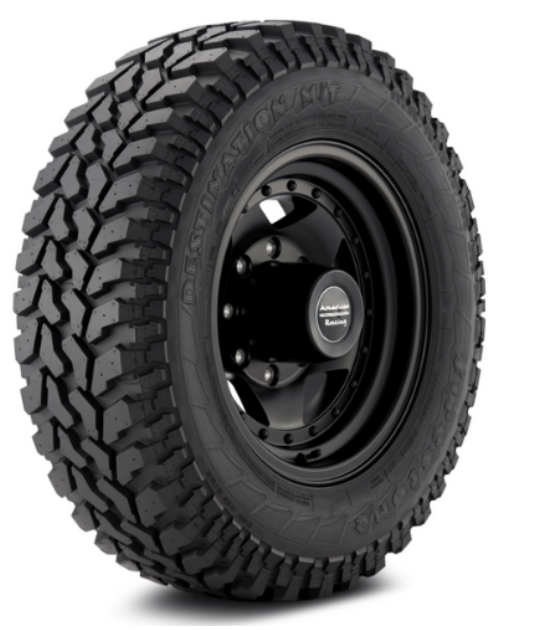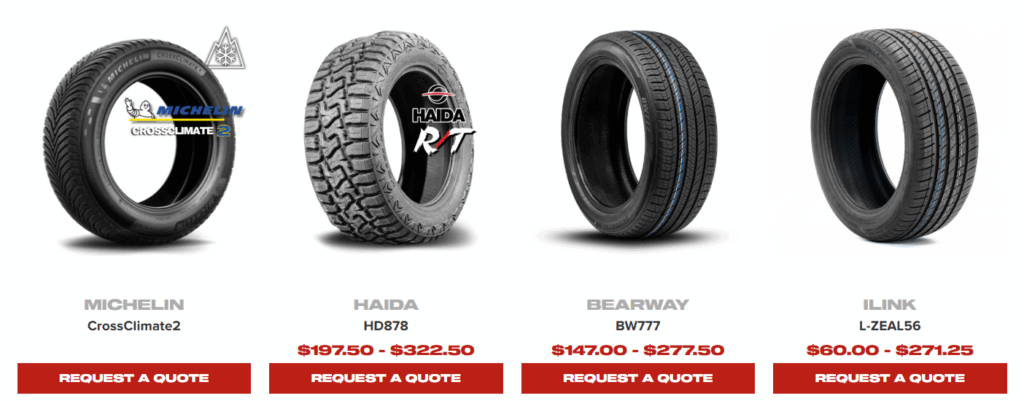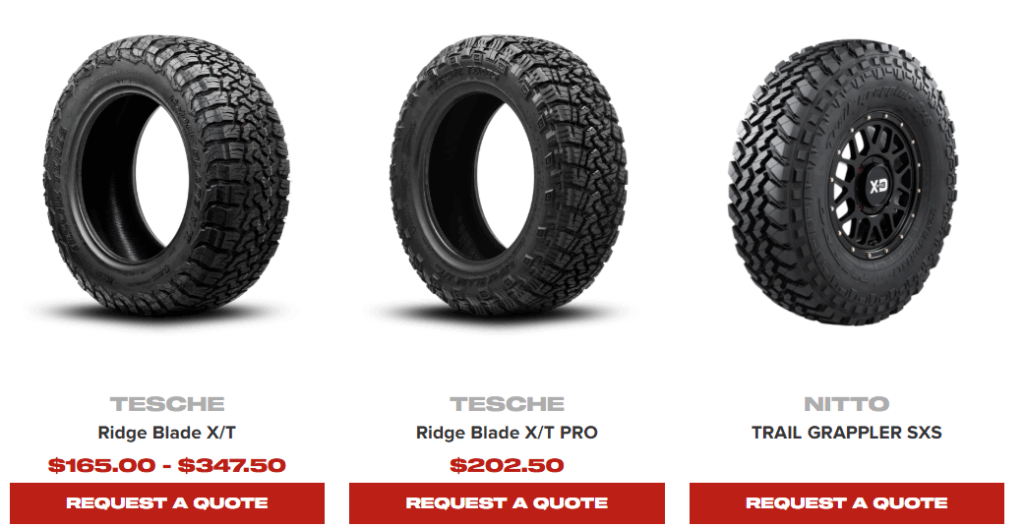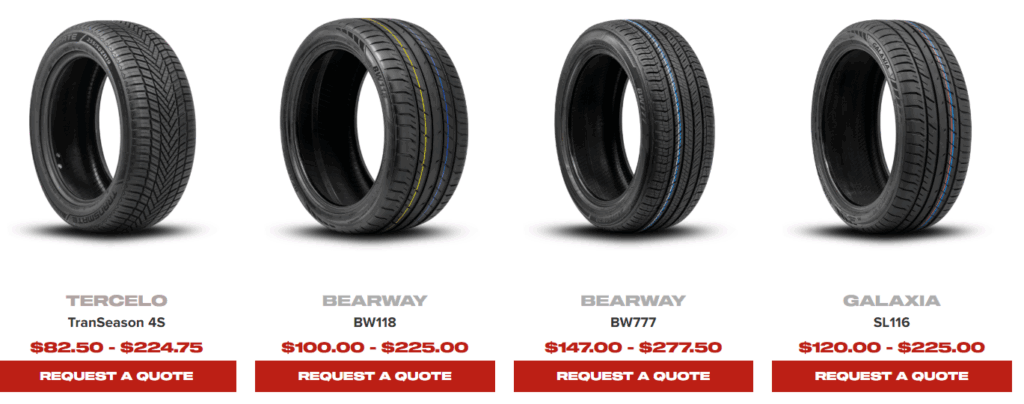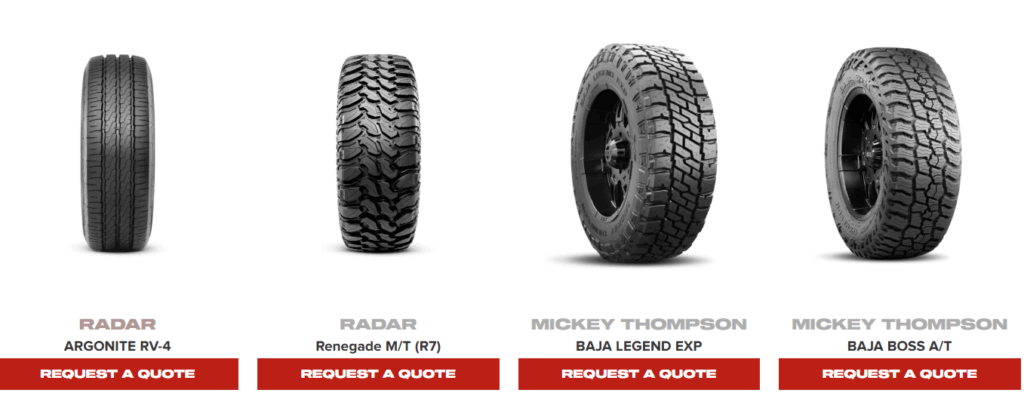Canadian winters bring icy highways, packed snow, and unpredictable weather that challenge even the most experienced drivers. While winter tires in Canada are essential for safe driving, there are conditions where standard winter treads meet their limits. That’s where tire studding steps in, delivering the extra grip needed to face black ice, hard-packed snow, and long stretches of frozen road. At Canada Custom Autoworks, we specialize in professional tire studding services designed to give you confidence and control during the harshest months. In this article, we’ll explore how studded tires provide the next level of safety and why they’re a smart choice for handling Canada’s toughest winter roads.
What Is Tire Studding?
Tire studding is the process of inserting small metal pins into winter tires to create additional grip on the most slippery surfaces. These pins, often called studs, are engineered to dig into ice and hard-packed snow, delivering traction that goes beyond what rubber tread alone can achieve.
When comparing studded tires with standard winter options, it’s important to understand the difference between studded and studdable models. Studded tires come with the pins already installed, ready to perform in extreme winter conditions from day one. Studdable tires, on the other hand, are manufactured with holes in the tread where studs can be added if needed, offering flexibility for drivers who face a mix of mild and severe weather throughout the season.
Additional service:
The principle behind studding is simple but effective: as the wheel rolls, the metal studs press into icy or compacted surfaces, breaking through slick layers and anchoring the vehicle more securely to the road. This added bite provides extra control for accelerating, braking, and cornering, making studding a valuable upgrade for drivers tackling Canada’s harshest winter environments.
Our products: Wheels and Rims
Why Studying Matters in Canada’s Winter Conditions?
Across the country, winter tire studies consistently show that traction is the single most important factor in avoiding collisions during severe weather. Studding provides the reinforcement needed when standard winter treads meet their limits.
Ice control
- Black ice forms invisibly on shaded highways and bridges.
- Freezing rain leaves a glassy layer that rubber alone can’t grip.
- Early mornings and late evenings increase the risk of hidden ice patches.
Hard-packed snow
- Highways with heavy truck traffic often create compressed, slippery snow layers.
- Rural roads that see less plowing can become difficult to navigate.
- Without studs, the tire tread may clog, reducing traction and stability.
Long winter seasons
- Northern and prairie provinces face months of deep freeze.
- Continuous cycles of thaw and freeze increase surface hazards.
- Studding gives drivers the durability to face extended harsh conditions.
Tip: If you regularly travel highways or rural routes during icy or snowy months, studded tires add a critical layer of safety that standard winter tires alone cannot provide.
Our products: All-Season Tires
Key Benefits of Tire Studding for Motorists
When comparing studded tires vs winter tires, the difference often comes down to how much safety margin you need in Canada’s toughest driving conditions. For drivers who face icy highways, long hauls, or heavy vehicles, studding provides measurable advantages:
Enhanced traction
- Studs bite into icy highways and steep grades.
- Reduce the risk of wheel spin on frozen climbs.
- Maintain grip where the rubber-only tread begins to slip.
Improved braking performance
- Shorter stopping distances on black ice and packed snow.
- Greater control when approaching intersections in freezing rain.
- Confidence when braking on rural or unplowed highways.
Better cornering stability
- Added grip reduces sliding in tight turns.
- Essential for larger vehicles like SUVs, pickups, and transport trucks.
- Keeps trailers and loads more stable during winter maneuvers.
Safety margin for long-haul drivers
- Critical for commercial vehicles covering thousands of kilometres.
- Provides consistency across changing road conditions.
- Minimizes downtime from weather-related delays.
Tip: If you drive a heavy vehicle, travel long distances, or rely on your truck for work, studded tires offer a higher level of security that standard winter tires may not match.
Where in Canada do Studded Tires Make the Biggest Difference?
Canada’s winter conditions vary widely, and tire studding is especially valuable in regions where ice, snow, and long freezes dominate the season. Choosing studs depends on where you drive most often:
Northern Ontario, Quebec, Newfoundland & Labrador
- Long winters with heavy snow and thick ice layers.
- Coastal areas add freezing rain and slush that freezes quickly.
- Studs provide grip on both urban streets and remote highways.
Prairie Provinces (Saskatchewan, Manitoba)
- Open, flat highways often coated in hard-packed snow.
- Long stretches of icy roads with strong crosswinds.
- Studded tires help maintain stability and reduce drift.
British Columbia Mountain Passes & Highways
- Steep grades and shaded routes create hidden black ice.
- Frequent thaw-freeze cycles make traction unpredictable.
- Studding improves safety for drivers hauling loads across passes.
Territories (Yukon, Northwest Territories, Nunavut)
- Extreme cold and winter conditions last most of the year.
- Roads are covered with snow and ice for months at a time.
- Year-round allowance of studded tires makes them a practical necessity.
Tip: If your routes include highways with frequent ice patches or remote roads where conditions change quickly, studded tires deliver the control and stability you need to drive with confidence.
Our products: Off-Road Tires
Canadian Studded Tire Regulations
Across the country, rules for studded tires vary, and tire studies highlight how regional policies are shaped by climate and road maintenance practices. In western provinces such as Alberta and Saskatchewan, studded tires are allowed without strict seasonal limits, reflecting the long stretches of icy roads that dominate their winters. Manitoba and British Columbia set defined usage periods, with BC adding restrictions on certain southern routes to limit pavement wear.
Ontario applies one of the strictest distinctions, allowing studded tires only in the northern districts such as Sudbury, Thunder Bay, and Kenora, while prohibiting them in the south. Quebec requires all drivers to use winter tires, studded or not, between December and March, reinforcing its reputation for rigorous winter safety standards. In Atlantic Canada, seasonal allowances are common, with deadlines typically stretching from fall into spring. The northern territories remain the most flexible, permitting studded tires year-round due to their extended and extreme winters.
Compliance with these provincial and territorial rules is not just a matter of law but also of preserving road infrastructure. By following local regulations, drivers can take advantage of studded tire safety without contributing to unnecessary pavement damage or risking fines.
Modern Advances in Studded Tire Technology
Over the past decade, manufacturers have transformed the way studs interact with the road, creating solutions that balance safety with comfort and environmental considerations. Modern tire studies show that newer studded models are no longer as noisy or damaging as their predecessors, offering a smoother driving experience while still delivering the superior traction Canadian winters demand. These innovations focus on reducing sound, minimizing pavement wear, and improving overall performance in icy conditions.
| Technology | Description | Benefit |
| Rubber Cushion Systems | A thin, soft layer of rubber placed under the stud base absorbs vibration and impact. | Creates a quieter ride by dampening noise and reducing stud vibration on pavement. |
| Eco-Stud Designs | Studs with specially engineered shapes and eco-friendly materials distribute pressure evenly. | Less intrusive on roads, minimizing surface wear while maintaining grip. |
| Multi-Stud Placement | Studs are arranged across the tread in varied patterns rather than in straight rows. | Enhances traction in all directions, improving cornering and braking stability. |
| Increased Stud Count with Softer Impact | Modern tires can carry nearly 300 studs, each designed with a lower penetration profile. | Delivers stronger ice grip without causing excessive pavement damage. |
| Lightweight Composite Studs | Some manufacturers use advanced plastics or alloys instead of heavy metals. | Reduces tire weight, improves fuel efficiency, and decreases road wear. |
Our products: Performance Tires
Which Is Better, Studded or Studdable Tires?
Studded tires are manufactured with metal pins already embedded in the tread, offering maximum performance from the moment they are installed. They are designed for drivers who face frequent icy roads and hard-packed snow, delivering immediate grip without any additional preparation. This makes them the most reliable option for regions where winter weather is consistently severe and unpredictable.
Studdable tires, on the other hand, provide flexibility. These models come with pre-molded holes in the tread that can be fitted with studs if conditions require it, or left bare when winters are less extreme. This adaptability allows drivers in transitional climates to adjust their tires according to the severity of the season, making them a versatile alternative to fully studded designs.
The difference between the two options lies in readiness versus adaptability: studded tires prioritize instant, uncompromising grip, while studdable tires give drivers the option to balance performance with changing regional or seasonal needs.
Our products: Light Truck Tires
Professional Tire Studding Services in Canada
Tire studding is a precise process that requires specialized tools and expertise to ensure each pin is correctly placed and balanced within the tread. Professional installation guarantees that the studs align evenly across the tire surface, preventing uneven wear and maintaining consistent traction. At Canada Custom Autoworks, the service is carried out with accuracy, ensuring that every tire meets performance and safety standards.
Studding is also paired with essential maintenance practices such as tire pressure checks, mounting, and balancing, which together extend the life of the tires and improve vehicle handling. For drivers preparing to face long stretches of icy highways, mountain passes, or rural roads, having studding performed by experienced technicians provides a level of reliability that self-installation cannot match.
Across Canada, where winter conditions shift dramatically from one region to another, access to professional tire studding ensures motorists can count on their equipment when it matters most.
Studded tires offer the extra grip needed to handle Canada’s toughest winter roads, from icy highways to long stretches of packed snow. For precise installation and dependable performance, trust Canada Custom Autoworks to prepare your vehicle for the season. Book your tire-studding service today and drive with confidence all winter long.
